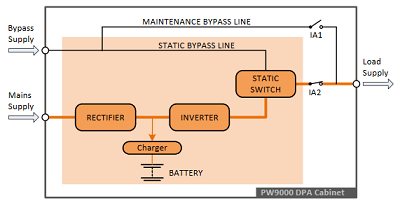White Papers
Book a FREE Health Check
We all know that maintaining our equipment is important, but £4,800 a minute?
The truth is that it’s surprisingly easy to sell the benefits of proper UPS battery maintenance… because they’re exactly the same as the benefits of owning a UPS system in the first place.
Data security, system protection, service uptime. These are all on the table when you’re considering how to maintain your UPS system, just as they are when you’re deciding which system to buy.
A recent study by Datacentre Dynamics Focus Magazine found that a single minute of datacentre downtime costs an average of £4,800. And it gets worse – The average incident lasts 86 minutes, which means a total cost of £412,800.
Now clearly datacentres are at the very top of the risk scale where downtime is concerned, but just take a moment to consider what the impact of a single minute of downtime might be for you. How long would it take to recover any lost work? Could it be recovered at all? Would your employees be able to work during the outage? Would there be any loss of business, or even loss of customer confidence?
And since estimates put battery failure as the cause of between 20-35% of all UPS failures, it’s time to start giving UPS battery maintenance the attention it deserves.
Anatomy of a UPS battery
Before I continue, I’d better provide some background. I don’t want to turn this into a science lesson, but to understand why battery maintenance is important it will help to have a basic understanding of how they work.
Most UPS systems, including ours, use lead-acid batteries which consist of multiple cells, each containing two lead plates (electrodes) suspended in sulphuric acid Asking the battery to provide voltage causes a chemical reaction, generating power and discharging the cell. This process converts the sulphuric acid to lead sulphate and water, and the process is reversed when the cell is recharged.
With that in mind, here are some of the most common concerns with lead-acid batteries:
Temperature – Operating temperature has a significant impact on battery life and performance. At low temperatures the performance (capacity) of the battery is reduced, and at high temperatures the battery ages more rapidly and reaches end of life more quickly.
Charge Voltage –It’s imperative that the ‘float’ charge to each battery compensates for changes in temperature. At lower than optimal temperatures the charge voltage must be increased to ensure the battery is recharged fully after each discharge, and conversely at higher temperatures it should be reduced to prevent overcharging.
Discharge Cycles –Lead-acid batteries can sustain many charge/discharge cycles within their lifetime, but there is a limit. Depending on the depth of discharge this limit could vary significantly, but once reached the useful life of the battery is at an end – For that reason it’s not advisable to subject your batteries to frequent load tests for monitoring purposes.
Preventing UPS Failure – One Cell at a Time
The lifespan of a typical UPS system is 10-15 years. The lifespan of a typical lead-acid battery is 5-10 years. Clearly you’re going to need to consider replacing your UPS battery at some point – But when?
Battery life can also be estimated by the number of charge/discharge cycles that take place. If each cycle constitutes a 30% discharge before recharging, you can expect 1200 cycles before the battery fails. At 50% discharge the figure is 550 cycles, and at 100% discharge it’s 250.
But wait, there’s more. All of these estimates are based on a battery temperature of 20°C – For every 10°C above that, the effective life of the cell is reduced by 50%.
But does this really help? What if each cycle is different, or the temperature varies? That’s a likely scenario, and it makes predicting the lifespan of your UPS battery very difficult.
Thankfully, there’s a solution. The KUP. PowerNSURE system provides ethernet-network integrated UPS battery maintenance, analysis and monitoring. The internal , temperature and voltage of every battery cell are monitored using web-management technology, and charging is automatically regulated. This ensures the availability of your batteries at all times, as well as preventing all of the common problems I mentioned earlier, and puts control of your UPS system firmly in your own hands.
Monitoring can be carried out regularly via on-site reporting, and faults with any and all battery cells can be detected before they cause a failure. Additionally, replacing problem cells early can substantially increase the lifespan of the complete battery system, and reporting will clearly show when it’s time to consider a total replacement.
It’s worth mentioning that PowerNSURE doesn’t replace the need for a UPS service plan, and indeed 70% of KUP. customers choose our fully comprehensive service. The combination of inclusive parts & labour, preventative maintenance visits and a 6 hour response time on 24/7 emergency callouts is difficult to beat where UPS system integrity is concerned. Having said that, combining PowerNSURE with an effective service plan means that you can call out engineers to prevent a UPS failure, not just to fix one, and that’s how you can save yourself £4,800 a minute.
At KUP we offer free, no obligation UPS health checks. You can sign up for a free health check here.[





